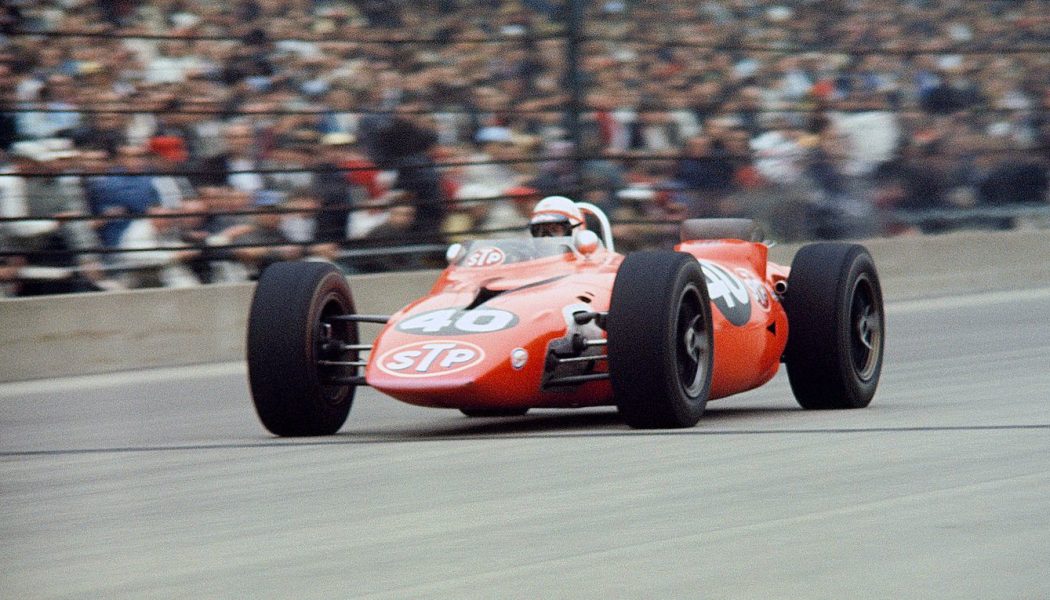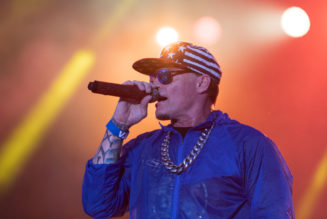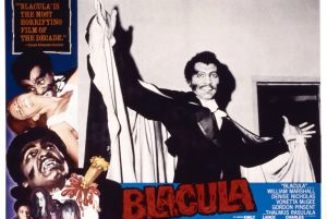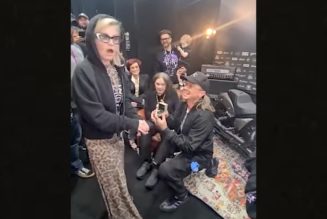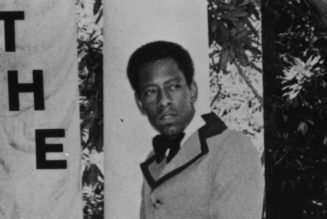This year, for the first time ever, the Indianapolis 500, The Greatest Spectacle in Racing, will not be held in the month of May. Due to the global health crisis, Indy race fans will have to wait until Sunday, August 23, to hear the sound of Honda and Chevrolet race engines shrieking at 230 mph around the fabled 2.5-mile track.
They like their tradition at Indy, from the yard of bricks at the finish line that is the only remnant of the surface Ray Harroun’s Marmon Wasp rumbled over en route to victory in the very first 500 in 1911, to the rousing rendition of Back Home in Indiana that sets the stage for the most famous command in racing: “Start your engines!”
And that’s what makes the Indy 500s held from 1963 through 1968 the most fascinating of them all.
At the beginning of the ’60s, Indy racecars had changed little in decades. They were essentially evolutions of traditional dirt-track racers designed before World War II, with rugged tube frames and simple beam axles front and rear. Most were powered by the four-cylinder, 4.2-liter Meyer-Drake Offenhauser, an engine originally designed in the early 1930s. And most had a two-speed transmission built from Model A Ford parts.
Tradition.
But by 1963, there was revolution in the air at the Brickyard. The winds of change had started blowing in 1961 when Australian Jack Brabham had arrived with the specially built Cooper Climax T54, a car adapted from the successful rear-engine grand prix racers that had taken him to successive Formula 1 world championships in 1959 and 1960.
Brabham’s Cooper wasn’t the first rear-engine car to appear at Indy—one of three rear-engine Miller-Gulf racers, built by legendary engineer Harry Miller for the Gulf Oil Company, qualified for the race back in 1939. But Brabham’s ninth-place finish in a car that had less power than the traditional roadsters, yet was much quicker through the corners, got some Indy insiders thinking.
“I knew when Jack Brabham came to Indianapolis that the rear-engine car was the way to go and that the roadster’s days were numbered,” said the late Rodger Ward, who won the 500 in 1959 and 1962, and finished in the top three in 1960, 1961, and 1963, all at the wheel of a traditional Indy roadster. “Many people couldn’t see, or just didn’t want to see, what was fast becoming a reality.”
1963 was a pivotal year, the year tradition began to make way for modernity at the Brickyard, unleashing a blitz of innovation and original thinking in racecar design seldom seen in top-level motorsport.
The 1964 race would be the last-ever 500 to be won by a traditional Indy roadster, and by 1966, only one front-engine car would be fast enough to qualify for the race. And in 1967, a futuristic all-wheel-drive racer without pistons and camshafts, a high-tech rocket ship that made the old-school roadsters look positively prehistoric, would come within a handful of laps of winning America’s great race.
Let’s take a look at some of the cars that made this era at Indy so fascinating; some of the coolest, and some of the craziest, racecars ever to run at the Brickyard.
THE OLD GUARD
Watson Roadster
Built new for the 1963 race by Los Angeles-based racecar constructor A.J. Watson, and driven by Jim Rathmann, this car was the ultimate expression of the traditional Indy roadster as racers gathered at the Brickyard that year. The 450-hp, 4.2-liter four-cylinder Offy engine was mounted upright and on the left of the chassis, driving through a two-speed transmission, and it rolled on tall, skinny tires mounted on 16-inch front and 18-inch rear wheels. It had beam axles front and rear, a throwback to dirt-track racers, but disc brakes all round.
Another Watson roadster, this car would famously win the 1963 500 with Parnelli Jones at the wheel. Although it was built in 1960, it was virtually identical in mechanical layout to the later Rathmann car. But in 1963, it became the first roadster to be switched from the traditional 16-inch and 18-inch wheels and skinny tires to wider and lower-profile rubber on 15-inch rims. Jones, who had been testing the tires on stock cars, reasoned it would give him more grip through the turns. Firestone engineers disagreed, but after Jones ran a string of fast laps during testing, 15s became the hot setup for roadster runners.
Kuzma-Meyer Roadster
Although the traditional Indy roadsters all had tube frames and beam axles front and rear, and most were powered by Offys, some builders did experiment with the engine’s position. This car, built by Eddie Kuzma and Lou Meyer in 1961, had the engine laid down to the left and outside the left-hand side of the frame, with the transmission and driveshaft running to the right of the driver to help with weight distribution through Indy’s turns. Other so-called ‘lay-down’ roadsters had the engine in the frame, and others even reversed the intake and exhaust, with the driveline to the left of the driver.
Kurtis Novi
Not all roadsters were Offy-powered. A 3.0-liter, quad-cam, supercharged V-8 designed in the late 1930s, the loud and potent Novi engine was a quixotic crowd-pleaser at Indy. It made over 450 hp at 8,000 rpm at its debut in 1941, but its power advantage was nullified by Novi owner Lew Welch’s obsession with a front-drive chassis. A change of ownership in the late 50s saw the Novis switch to a rear-drive chassis built by Frank Kurtis, and by the time Art Malone qualified his Kurtis Novi for the 1964 race, the engine was said to be making more than 700 horsepower.
THE NEW WAVE
Lotus 29
Having been impressed by Colin Chapman’s innovative, rear-engine Lotus 25 during the 1962 Formula 1 season, Dan Gurney persuaded Chapman to build a car to contest the 1963 Indy 500. The Lotus 29 was a based on the 25, with a similar light and rigid aluminum monocoque chassis, but instead of the F1 car’s 1.5-liter Coventry-Climax V-8, it was powered by a stock-block 4.2-liter Ford V-8. Driven by Scotsman Jim Clark, who would win the F1 world championship that year, it finished in second place at Indy, with Gurney in a similar car placing seventh.
Mickey Thompson Harvey Aluminum Special
Although it had a conventional tube frame rather than the monocoque of the Lotus 29, the rear-engine car California hot-rodder Mickey Thompson brought to Indianapolis in 1963 was in some ways even more radical. Designed by John Crossthwaite, who had worked at rear-engine pioneer Cooper in Britain, the Chevy V-8-powered Thompson was designed around 12-inch wheels and low-profile tires to ensure an extremely low silhouette. Veteran Duane Carter qualified it on the fifth row but retired from the race when the engine blew.
Rear-Engine Watson
Although both Parnelli Jones and A.J. Foyt tested and rejected rear-engine cars for the 1964 race, the rear-engine revolution was gaining traction at Indy, with even A.J. Watson building a tube-frame rear-engine chassis for the race. Rodger Ward came second in his Ford-powered car. Don Branson’s rear-engine Watson stuck closer to tradition with a venerable Offy mounted behind the driver, but he retired on lap 187 with clutch problems. The race was won by A.J. Foyt … in a traditional Watson roadster. It was the last time a front-engine car would win the Indy 500.
Lotus 38
One of the most beautiful cars to race at the Brickyard, the Lotus 38 made history in 1965 by becoming the first rear-engine car to win the Indy 500. Driven by Jim Clark, who had led the 1964 race in his Lotus 34 until the rear suspension broke, the Lotus 38 was powered by a special aluminum-block Ford V-8 with quad cams and Hillborn fuel injection making more than 500 hp. A.J. Foyt put his Lotus 34 on pole at a record 161.233 mph, but Clark, starting from the front row, grabbed the lead on the first lap, and led for 190 laps to become the first non-American to win the 500 since 1916.
THE NON-CONFORMISTS
Smokey Yunick’s Capsule Car
Smokey Yunick was one of racing’s most original and innovative thinkers, and though best-known for his successes in NASCAR, he ran cars at Indianapolis from 1958 through 1973. His 1964 Capsule Car featured a rear-mounted Offy and a large capacity fuel tank in a central fuselage, with the driver in a ‘capsule’ hung between the wheels on the left-hand side. With cars allowed to run unlimited fuel at the time, this strange configuration was supposed to help maintain balance as fuel was used. Driver Bobby Johns brushed the wall of the final day of qualifying and the car didn’t start the race.
M/T Challenger
One of the first American constructors to build rear-engine cars for Indy with his 1963 and 1964 contenders, Mickey Thompson turned 180 degrees—literally— for the 1965 race. The M/T Challenger featured a Thompson-developed quad-cam Chevrolet V-8 cantilevered out ahead of the driver in a titanium tube backbone chassis and driving the front wheels. Thompson called time on his 1965 Indy bid after the engine blew during qualifying, even though driver Bob Malthouser had turned laps at better than 157 mph in practice, which would have put the M/T Challenger in the 33-car field.
Ferguson Novi
By the mid-60s, the fabled Novi V-8 was making 750 hp and reckoned by many to be almost undriveable. Stirling Moss suggested to Novi owner Andy Granatelli the AWD system from the Ferguson P99 F1 car he’d driven might be able to put that power to good use. Although it looked like a roadster, the AWD system required a front engine layout and the 1964 Ferguson Novi had a semi-monocoque chassis and independent suspension. Unlucky not to place well in the ’64 and ’65 500s, it was heavily modified for the 1966 race but did not qualify. It was the last Novi to ever run at the Brickyard.
Stein-Porsche Twin
This wasn’t the first twin-engine car to run at Indy: The 1946 Fageol Twin Coach Special was powered by a pair of Offys, one up front driving the front wheels, and one at the rear driving the rear wheels. The basic thinking behind the Stein-Porsche Twin, which attempted to qualify for the 1966 500, was sound. The Porsche flat-six engines meant a low center of gravity and no heavy cooling system, and all-wheel drive meant good stability. Driver Bill Cheesbourg could indeed stay flat through Indy’s turns, but the car was 10 mph slower than anything else on the straights and didn’t make the grid.
THE FUTURIST
STP-Paxton Turbocar
1967 was the year the future arrived at the Brickyard, in the shape of the STP-Paxton Turbocar. The Indy railbirds nicknamed it ‘Silent Sam’ on account of its whooshing, whistling exhaust note, so at odds with the snarl of highly-strung V-8s and the growl of turbocharged Offys then in vogue.
Silent Sam sounded different because it was different. Very different. Unlike all the other cars pounding around Indy’s famed and feared 2.5-mile track, its powerplant had no pistons, no camshafts, no clattery poppet valves controlling vapors and gases. Instead it was powered by a Pratt and Whitney gas turbine engine normally used in helicopters, rated at about 550hp.
The idea of using a turbine engine at Indy, where cars run an entire lap at high speeds in top gear at fairly constant revs, had been floated by Ken Wallis, a distant relative of famed British WWII aircraft and weapons designer Barnes Wallis. Both Dan Gurney and Carroll Shelby turned it down, but promoter and entrepreneur Andy Granatelli, who owned the Novi operation, saw an opportunity to shake up the racing establishment.
Granatelli is credited with the idea of placing the engine on the left of the driver- echoing Smokey Yunick’s Capsule Car concept—and with adopting the Ferguson all-wheel drive system used on the final generations of his Novi-powered Indycars. The engine drove through a torque converter, and with the idle speed set at 54 percent of throttle, the driver needed only to lift off the brake pedal for the car to get underway.
Parnelli Jones qualified the car in sixth, but grabbed the lead on the first lap, storming past the field and driving off into the distance with such ease he was later accused of having been sandbagging during qualifying. Not true, Jones said, explaining that while the turbine car had tremendous torque which, with the all-wheel drive system, meant it was super quick out of the turns and along Indy’s short chutes, it couldn’t match the faster conventional cars running in qualifying trim with light fuel loads and a dash of nitro in the tank.
Jones, who four years earlier had won the 500 at the wheel of a quintessentially traditional Offy-powered Watson roadster, would lead 171 laps in this futuristic rocket ship of a racecar before a bearing failed in the transmission with three laps remaining.
WHAT HAPPENED NEXT?
Shelby Turbine and Lotus 56
Six turbine-powered cars were entered for the 1968 Indy 500, even though the sanctioning body had reduced the allowable air inlet on turbine engines from 21.90 square inches to 15.99 square inches in a bid to reduce their speed advantage.
One was Silent Sam, the STP-Paxton Turbocar, which Parnelli Jones was again slated to drive. Two turbine cars were entered by Carroll Shelby, for Formula 1 regulars and Le Mans 24 Hour Ford GT drivers Bruce McLaren and Denny Hulme—the latter the 1967 Formula 1 World Champion. And Colin Chapman brought a squad of turbine-powered STP Lotus 56s to the Brickyard, one to be driven by 1962 Formula 1 World Champion Graham Hill.
All cars were similar in concept, with their turbine engines driving all four wheels through an automatic transmission; indeed, the Shelbys, designed by Ken Wallis, looked almost identical to Silent Sam, with engine and driver almost side-by-side in the chassis.
Chapman’s Lotus 56 differed in that the driver and the engine were in the center of the monocoque chassis, the modified Pratt and Whitney engine mounted just behind the cockpit. And it pioneered a radical new shape for racing cars, boasting a wide, flat, aerodynamic wedge design rather than slim, cigar-shaped bodywork. It was also 400 pounds lighter than the STP-Paxton.
One of the 56s was destroyed in a testing crash that also claimed the life of Lotus driver Mike Spence. Silent Sam was also crashed during testing. Both the Shelbys were quietly taken home amid rumors their air inlets could be opened beyond the allowed limit by way of a heating element that expanded two different metals in the vents at different rates. That left three of the Lotus 56s to start the race. Joe Leonard, his car set up by Parnelli Jones, would put one on pole, with Hill alongside on the front row. Art Pollard would start 11th.
In the race, Hill would lose a wheel on lap 110 and crash, and both Pollard’s and Leonard’s cars would suffer identical fuel pump drive shaft failures late in the race, with Leonard’s Lotus coasting to a halt while he was leading with just nine laps to go.
Rear engine cars had come close to winning the Indy 500 twice—in 1963 and 1964— before Jim Clark’s victory in 1965. But the turbine-powered Indy racers would not be given the opportunity to emulate that feat; sanctioning body USAC banned turbine engines from the 500 later in 1968. There was a new tradition to maintain at the Brickyard.
More Videos
